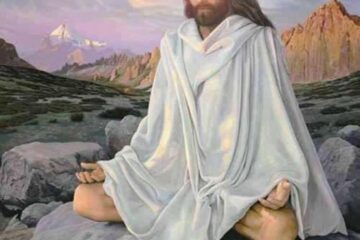
Rebirth of Nature Festival
Easter has been a “Rebirth of Nature Festival” for millennia and, of course, before Christ. It is a universal festival in those lands with seasonal changes, which is half the world. The fertility goddess of different cults has been worshiped in the spring season. The word Easter comes from the name of a Teutonic goddess named Eastre, the goddess of the dawn who was worshiped at the spring equinox every year in pagan ceremonies in pagan lands long before the Christians inhabited them. When Christianity came to those lands, they found it natural to fuse the two celebrations into one, retaining the original word that had become so widespread that it couldn’t be changed. So, we have Easter.
Celebration of Spring and Spirit
Easter is a celebration of both the season and the Resurrection of Christ—of both Spring and Spirit. For those who cannot respond to the latter, there are Easter rabbits, colored eggs, new clothing. There are rites glorifying the cult of fertility and all the traditional exercises of folklore during the springtime of the year. For these worshippers at Nature’s shrine, the theme of rebirth is manifested not in a turning inward but in a turning out, not in spiritual reality but in symbols and tokens of that reality.
These Nature celebrations are a kind of allegory of the soul’s life, but no more than that. They do not awaken the human soul; it still sleeps on. We feel that Nature is reflecting something beyond her. But something is missing in the Nature and pagan celebrations of Easter — that is Good Friday, the key to Easter. Without Good Friday, there is an awakening in Nature, but no spiritual awakening, which is what makes Easter the chief day in the Christian year.
Christ’s Example
In the West, with our strong emphasis on the creaturely self, we needed someone to embody dramatically the grand theme of spiritual life and sacrifice. Before Christ, the figure of Socrates was enthroned as the great moral figure of antiquity. His death is one of the memorable deaths of all time, second only to Jesus as an inspirational phenomenon. In Christ, we have something higher that we don’t find in Socrates. It is not just one item in a philosophy, but the crucial pillar in spiritual life: The law of life is sacrifice.
This is what Buddha preached: “Truth is life — self is death.” Self must be overcome somehow or other. This law means the breaking down of barriers that exist between individuals, and the willingness to do anything to help others by serving selflessly. In this way, we become free of those barriers, too.
For the West, we have Christ dramatizing this truth of life on the cross. We must crucify something in ourselves — our egotism, our self-centeredness — that doesn’t want to be killed. It needs to be killed, ultimately, to realize our ascension and immortality.
Resurrection
The resurrection is a spiritual state. We have thought Jesus resurrected from the body, but this is a spiritual gospel. Therefore, the resurrection of the body would have no special significance. In fact, long before he died, he said to Martha, after being told of Lazarus’ death, “I am the resurrection and the life.” (John 11: 25) He had already reached that state, therefore, he didn’t achieve any resurrection after dying.
Likewise with St. Paul, there is a passage in which he is seeking this state. “If by any means I might attain unto the resurrection of the dead. Not as though I had already attained, either were already perfect: but I follow after, if that I may apprehend that for which also I am apprehended…” (Philippians 3: 11-12) In other words, I’m not perfect now, “not as though I had already attained, either were already perfect,” but I hope to be perfect. Nothing about the body dying here. He is struggling to attain this state. As he says elsewhere, “I die daily.”
Therefore, Jesus’ resurrection is not attained by dying. It is attained by living. The resurrection would be a perfection, a kind of immortality known in this life.
This is what Christ dramatizes. He kills the lower nature to allow the super-nature, the soul, to emerge and ascend. This is the law of sacrifice. So, if we obey the law, it will save us whether there is a Christ in the world or not.
The image of the cross represents the crucifixion, but also Joy, Giving, embracing the whole world. As Christ did on a major scale, we, on a minor scale, can do the same thing. Belief is only the beginning, but sacrifice is the way.
Die to self and rise to Life, to Resurrection, Illumination … to Easter!
By Paul Hourihan, edited by Anna Hourihan



0 Comments